Business
Whittlesey butcher makes appeal for customers on social media

 John Devine/BBC
John Devine/BBCA shop that has housed butchery businesses for more than 100 years could face the chop unless more people use it.
Jones Butchers has stood on Broad Street in Whittlesey, near Peterborough, since 1957 and before it, two other butchers dating back to the early 1900s have been there.
Mark Field, a butcher with 30 years’ experience, took over the business in June but has appealed for more customers on social media, putting his struggles down to the cost of living and the convenience of supermarkets.
Trade association National Craft Butchers (NCB) said beef prices were at an historic high, with the cost of meat generally rising 17%, which had made it tough for independent butchers.
 Mark Field
Mark FieldAfter always working for other people in the butchery industry, Mr Field, 47, thought he would try and go it alone and run his own shop after an opportunity arose.
“I am not regretting taking it on because I have a love for the job and I’ve always wanted to do this,” he said.
But despite a summer perfect for barbecues, Mr Field said he had already been forced to cut down on staffing hours and upped his own shift patterns, working 60 hours a week.
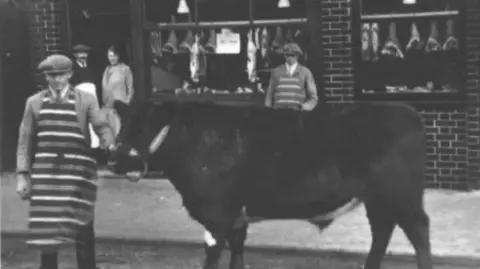 GRAHAM JONES
GRAHAM JONES“Things have picked up a bit since I made the plea for more customers on Facebook last week, so I will keep my fingers crossed”, he said.
But he added: “The cost of meat has been rising across the board, and I think younger people can sometimes feel intimidated by coming in to a shop where they have to ask for something. They prefer picking up meat in packs from a supermarket.”
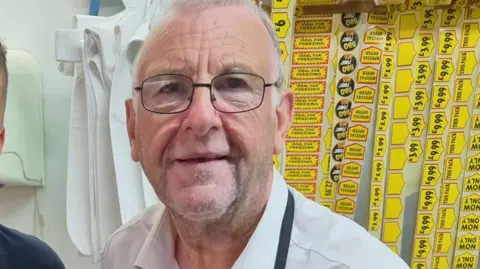 BENT AND CORNWELL
BENT AND CORNWELLAdrian Cornwell, who runs Bent and Cornwell in Ely, noticed that business had also been quieter this year.
“We can’t compete with supermarkets on prices, but what we can do is share our vast knowledge with our customers on how best to prepare various cuts of meat,” he said.
Mr Cornwell added that he had tried to replicate how the supermarkets displayed their meat, because “that’s what the shopper expects”.
He agreed with Mr Field that the younger generation seemed to forgo visiting butchers’ shops, preferring the convenience of the supermarket.
Beef prices have increased to historic highs of £7 per kg due to constrained supply and continued consumer demand, said NCB.
According to the British Retail Consortium, food prices rose by 4% in July from a year earlier.
Meat prices have also increased by 17% up to June this year.
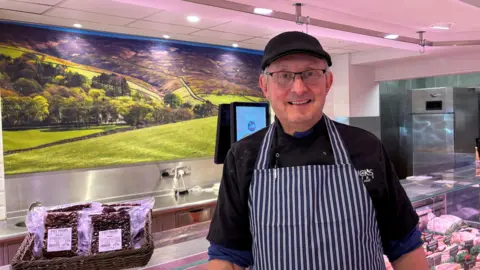 John Mettrick
John MettrickJohn Mettrick, legislation director at NCB and a fifth generation butcher, said it was “tough for all businesses on the High Street, not just butchers”.
He said his own shop had managed to entice younger customers by selling “kitchen-ready” meals.
“I do a thing called ‘fake-a-ways’, stir fries, Indian dishes, all prepared ready for the oven, it saves so much time,” he said.
Business
Google’s Gemini Nano Banana AI goes viral, generating 3D Figurines
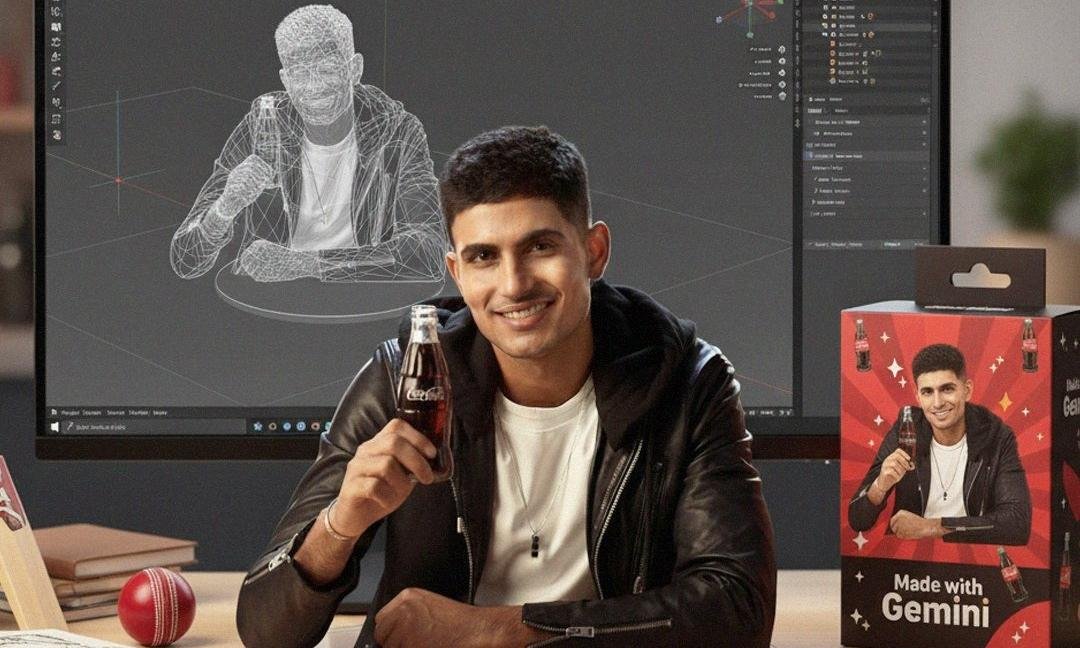
Nano Banana, the latest image-generating tool of Google’s AI chatbot Gemini, has taken the internet by storm with “gemini nano banana ai 3d figurines” trending on Google.
So, how to use Gemini Nano Banana? Users only have to give simple prompts to Google Gemini to generate realistic figurines of the image uploaded with the prompt. The generated figurine not only looks realistic but can also be put in a setting of the user’s choice.
Steps for using Gemini Nano Banana
First, the user has to open Google Gemini on his or her mobile or computer and log in with their credentials.
Then, the user has to upload an image of their choice that they want to convert into a figurine. However, the image should be clear so the AI can detect it properly. Once the image is uploaded, the user can give a prompt to generate the figurine of his or her choice.
Also Read: OpenAI vs Grok vs Gemini in world’s first AI chess tournament: Guess who won?
How to prompt Gemini Nano Banana
A suitable and easy prompt for the purpose has been shared by Google Gemini on its official X handle. “Create a 1/7 scale commercialised figurine of the characters in the picture, in a realistic style, in a real environment. The figurine is placed on a computer desk,” stated the prompt.
“The figurine has a round transparent acrylic base, with no text on the base. The content on the computer screen is a 3D modelling process of this figurine. Next to the computer screen is a toy packaging box, designed in a style reminiscent of high-quality collectable figures, printed with original artwork. The packaging features two-dimensional flat illustrations,” it added.
Also Read: Eight free AI tools to create Studio Ghibli-style images easily
Other features of Nano Banana
Apart from generating images, Nano Banana can also be used for adding or removing elements in a picture. It can be done with this simple saying: “Using the provided image, please [add/remove/modify] [element] to/from the scene. Ensure the change is [description of how the change should integrate],” reported the Hindustan Times.
Users can also combine multiple images and create a new one. All the user has to do is use this prompt: “Create a new image by combining the elements from the provided images. Take the [element from image 1] and place it with/on the [element from image 2]. The final image should be a [description of the final scene].”
Business
What’s ‘decision-making AI’ and how is it transforming SMEs?

Their findings show many business leaders don’t yet understand how AI can transform the performance of their organisation. The key lies in decision-making AI, or ‘decision intelligence’ – but what does that actually mean?
According to YouGov’s findings published in August 2025, whilst 31% of SME leaders are already using AI-powered tools – and another 15% plan to – just 19% are using AI for decision-making within their business. Strikingly, YouGov’s press release about the new figures took a surprised tone at the concept of using AI to support decision-making, “given the technology’s well-known tendency to occasionally hallucinate answers”.
That sentence highlights a lack of understanding on the part of the author, which perhaps reflects some wider misunderstandings and assumptions. When it comes to business, what do we mean by AI? And are we missing a trick if we’re confined to thinking of it as ChatGPT or Microsoft Copilot and not applying AI at a higher level to help make important business decisions?
Misunderstandings and mixed messages
Confusion often lies in the broad brush with which ‘AI’ is painted. The term can encompass use cases as disparate as recipe suggestions and predictive analytics engines. This blurs the distinction between novelty and necessity, between compute-intensive curiosity and transformational business decision support.
The YouGov data highlights that only 29% of SMEs have any form of in-house AI expertise; others are turning to external suppliers or remaining cautious. That gap in understanding is fertile ground for misconceptions around reliability, risk, and return.
I see the solution as twofold: firstly, with the need for education. Business leaders, particularly within SMEs and the mid-market, need better support from the public and private sector to understand how AI can substantially boost their company’s performance – that AI isn’t some magic wand but a disciplined data-driven support tool.
Secondly, with tailored delivery. AI is most effective when it’s applied within a system that’s bespoke to each firm’s data, culture, and decision-making habits – not when it’s seen as a ready-made tool to be bought off the shelf.
Decision intelligence
While generative AI and agentic AI help streamline desk-based tasks and automate customer service, the true potential of AI is unlocked with ‘decision intelligence’. For most SMEs, this decision-making AI is what will really boost the bottom line.
Decision intelligence involves bringing an organisation’s data together, then using custom machine-learning models that directly answer the questions business leaders ask: “What’s happening in my business?”, “Why is it happening?”, and “What should I do next?”. I describe it as allowing you to look around corners and look into corners.
These AI tools help businesses deliver tangible outcomes in weeks, not years, drawing on data from multiple sources such as Marketing, Sales, Finance, HR, and Operations, to deliver actionable and accountable intelligence.
Take Irish retail chain Petstop as an example. Using Galvia’s AI-powered platform, they created a single, connected view of their data, breaking down internal silos and enabling faster, smarter decisions across every level of the organisation. With intelligent prompts, real-time predictions, and clear insights, their teams began acting with greater confidence and agility, from the head office to the shop floor. As the founder and CEO told me, “it was like turning on the lights.”
Early results have included their best online sales performance outside the holiday period, recovering a 2.5% revenue dip without spending on ads, and launching customer campaigns that prioritised retention over acquisition, delivering far stronger ROI.
A call for intelligent adoption
SMEs are still in the early stages of AI adoption. I often hear leaders say they can see the potential of AI but don’t know which problem to solve first.
My advice: start with one dataset, one decision or one challenge. Often, the most powerful starting point is to unlock value from what you already have. The risk is that, in trying to do everything, you end up doing nothing.
Encouragingly, there are now more structured ways for leaders to build their confidence in AI. Initiatives such as dedicated AI Adoption accelerator programmes give business directors a chance to understand the fundamentals, explore the potential in their own data, and leave with practical next steps for driving impact. The more SMEs can access that kind of support, the faster they’ll move from AI confusion to clarity.
Business
UK economy saw zero growth in July
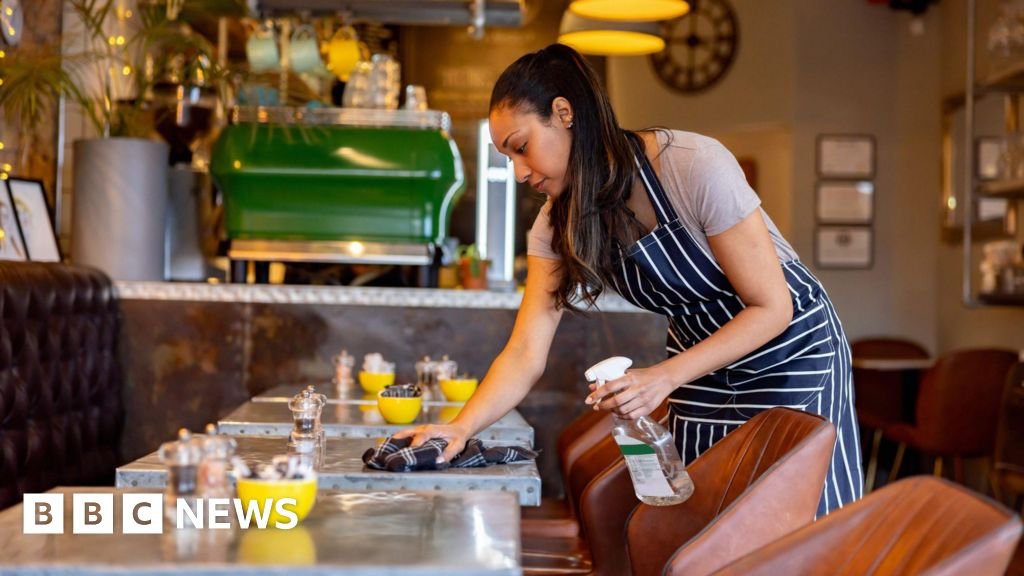
The UK economy failed to grow in July, according to the latest official figures.
The Office for National Statistics (ONS) said the economy saw zero growth in the month, following a 0.4% expansion in June.
However, monthly figures are volatile, and over the three months to the end of July, the economy grew by 0.2% compared with the previous three months, the ONS said.
The government is under mounting pressure to deliver on its key priority of boosting economic growth ahead of the Budget on 26 November.
The UK’s statistics body said the service sector performed well, helped by the health sector, computer programming and office support services.
However, this was offset by a weak performance in the manufacturing sector.
In the Budget, Chancellor Rachel Reeves will outline the government’s tax and spending plans with increasing speculation she will have to raise taxes to meet her self-imposed fiscal rules.
Yael Selfin, chief economist at KPMG UK, said the “weak start to the third quarter [is] a sign of things to come”.
“Economic activity is expected to slow in the second half of the year as the temporary factors which pushed up growth in the first half of 2025 begin to fade,” she said.
“Additionally, the later date of the Autumn Budget could prolong some uncertainties for businesses, delaying investment decisions and acting as a drag on growth until more clarity emerges.”
Responding to the latest growth figures, a Treasury spokesperson said: “We know there’s more to do to boost growth because whilst our economy isn’t broken, it does feel stuck.
“That’s the result of years of underinvestment, which we’re determined to reverse through our plan for change.
Shadow chancellor Sir Mel Stride said: “Any economic growth is welcome – but this government is distracted from the problems the country is facing.
“While the government lurch from one scandal to another, borrowing costs recently hit a 27-year high – a damning vote of no confidence in Labour that makes painful tax rises all but certain.”
-

 Business2 weeks ago
Business2 weeks agoThe Guardian view on Trump and the Fed: independence is no substitute for accountability | Editorial
-
Tools & Platforms1 month ago
Building Trust in Military AI Starts with Opening the Black Box – War on the Rocks
-

 Ethics & Policy2 months ago
Ethics & Policy2 months agoSDAIA Supports Saudi Arabia’s Leadership in Shaping Global AI Ethics, Policy, and Research – وكالة الأنباء السعودية
-

 Events & Conferences4 months ago
Events & Conferences4 months agoJourney to 1000 models: Scaling Instagram’s recommendation system
-

 Jobs & Careers2 months ago
Jobs & Careers2 months agoMumbai-based Perplexity Alternative Has 60k+ Users Without Funding
-

 Podcasts & Talks2 months ago
Podcasts & Talks2 months agoHappy 4th of July! 🎆 Made with Veo 3 in Gemini
-

 Education2 months ago
Education2 months agoVEX Robotics launches AI-powered classroom robotics system
-

 Education2 months ago
Education2 months agoMacron says UK and France have duty to tackle illegal migration ‘with humanity, solidarity and firmness’ – UK politics live | Politics
-

 Funding & Business2 months ago
Funding & Business2 months agoKayak and Expedia race to build AI travel agents that turn social posts into itineraries
-

 Podcasts & Talks2 months ago
Podcasts & Talks2 months agoOpenAI 🤝 @teamganassi


